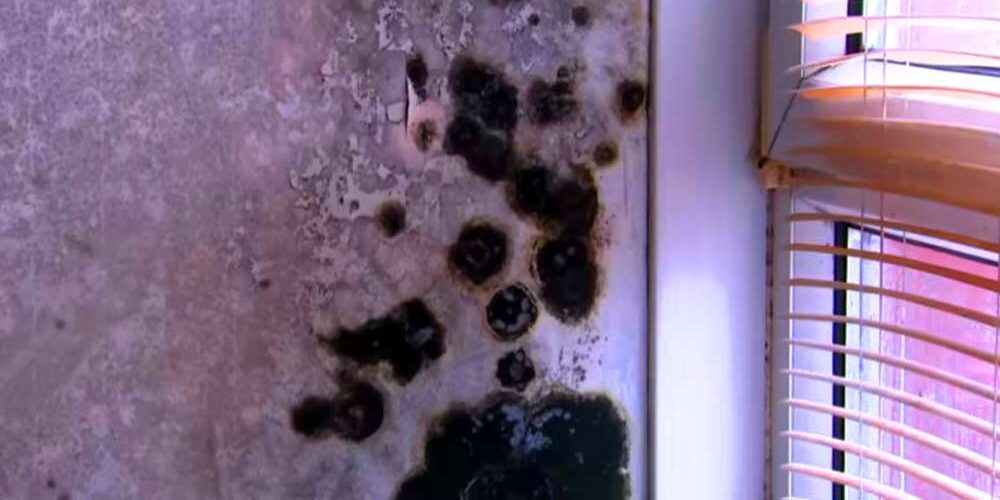It is impossible to put into words the appalling conditions we found people living in, in Croydon, south London. Not even the pictures you can see below do justice to the dangerous squalor residents, some of them young children, have been forced to endure for months. Before you even see the black mould and the damp inside the flats, you can smell it in the corridors.
Before you see the water falling from the ceilings and coming down the walls, you can hear it: the tortuous, continuous drip, drip, drip of dirty water into buckets. The damage is so bad, it has been described by both the chief executive of the UK’s biggest housing charity, Shelter, and the former chair of the UK Health and Safety Executive as the worst housing conditions they have ever seen.
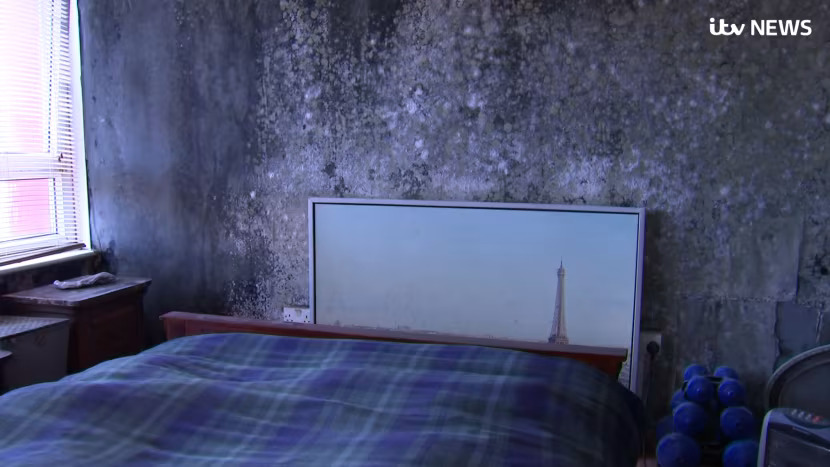
Mould on the walls in Leroy’s bedroom.
Credit: ITV News
Since 2019, residents of the tower block on Regina Road in South Norwood have been complaining to their landlord, Croydon Council, of leaks in their flats – leaks that have now turned their homes dangerous and uninhabitable. Fransoy Hewitt, who lives on the ground floor with her two sons, aged five and seven, started noticing damp and mould 18 months ago. She has shown us evidence of contacting the council in October 2019 to inform them of a leak in the flat.
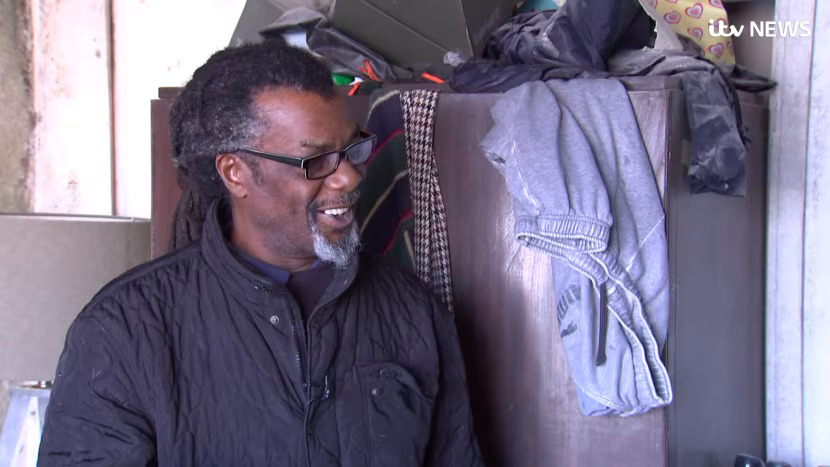
Leroy says he contacted Croydon Council over 10 times since September last year. Credit: ITV News
She continued to complain throughout 2020, and despite visits from the repair team in that time, the mould and damp have got worse. Then in December 2020, the leak intensified. The floors of the flat are now soaking wet; black mould has taken over the kitchen, rendering it unusable.
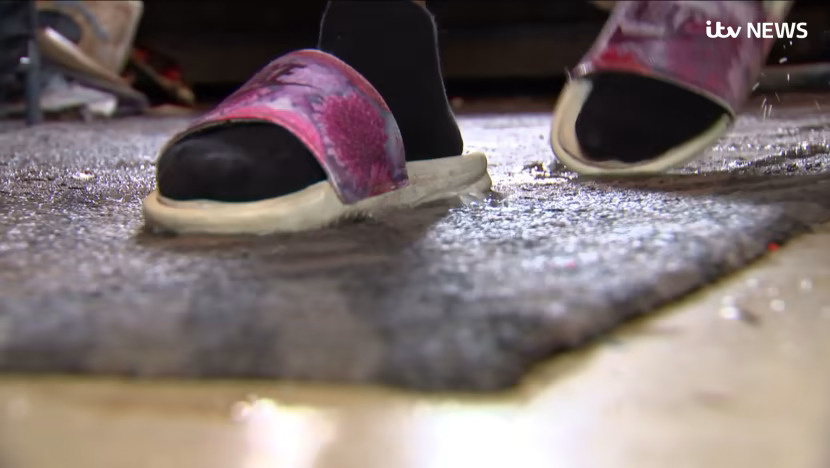
The soaking wet carpet in Fransoy’s flat.
Credit: ITV News
To prevent electrocution, the fridge has been unplugged for more than three months. She has no light in the bathroom, her sofa has been destroyed along with many of her children’s shoes and toys. The only room in the entire flat undamaged is the small bedroom the family of three cook, eat, play and sleep in. Fransoy shows me a logbook of all the calls she has made to the council since the start of December regarding the growing damage, without any action been taken. She says she has called Croydon Council at least 20 times.
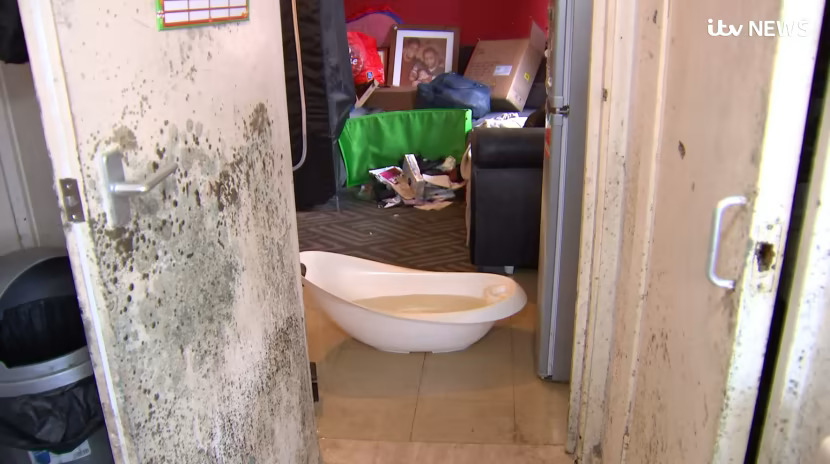
Fransoy used the baby bath to catch dripping water.
Credit: ITV News
The mother-of-two says the way she’s been treated “makes me feel like I am not even human”. How does she cope? “I’m not coping,” she tells me. “There is only so much I can get angry, and pull my hair out – I just feel like I’m going to kill myself if I continue like that.”
-
Rent arrears in ‘crisis’ during Covid pandemic, new figures reveal
-
Ban on evictions in England and Wales extended by four weeks
Fransoy believes the state of the flat is making them all sick. She has to put vapour rub on her youngest son’s chest to help him breathe at night. On the next floor up, we find Leroy living in the same horrific conditions. The mould on his walls and ceilings is so thick and dominant, it’s as though there has been a fire in his flat.
Like Fransoy, Leroy says he’s called Croydon Council at least 10 times since September 2020. He says repair teams have been in to see what we saw, what you can see in these videos, but repairs haven’t been made. When I ask Leroy why he think he’s not been listened to, he is reluctant to say. “I got a feeling, when I used to ring up before, I’d say ‘my name’s Leroy, Leroy McNally’ and I got a feeling that puts them on the off-foot because straight away they’re (thinking) ‘Leroy – black person, we don’t want to deal with this person’. I got a feeling it’s something like that.
“Eventually I started saying my name is Mr McNally – I wouldn’t say Leroy – and I got a better response.”
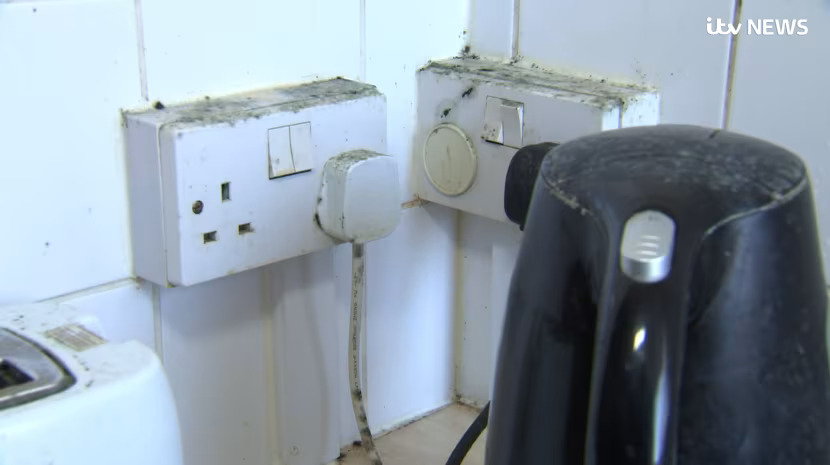
There is a ‘risk of electrocution’ in the damp flats.
Credit: ITV News
There is no doubt that poor housing discriminates.
According to the government’s latest English Housing Survey, 33% of mixed White and Black African households live in a non-decent home compared to 18% of White households, . A “non-decent home” is one with no modern facilities, no effective insulation or heating, or is in a state of disrepair. Thirteen percent of mixed White and Black Caribbean households are more likely to have damp problems compared, to just 3% of White households. It’s not just Leroy and Fransoy living in these conditions. We have spoken to several residents in the building experiencing mould, damp, leaks and, at times, flooding. One man, who didn’t want to be identified, told us the dripping got so bad in his flat that he had to sleep in a tent in his living room.
“It’s hard to believe this is Britain in 2021.”: Independent environmental hygienist Jeff Charlton’s verdict on Fransoy’s flat after he carried out an assessment of the potential dangers
We asked Jeff Charlton, an independent environmental hygienist with more than 30 years experience, to carry out a professional assessment of Fransoy’s flat to assess the potential dangers. His report found there was:
-
“Serious health hazard and danger to occupants”
-
“Risk of electrocution”
-
“Potential exposure to asbestos (unconfirmed)”
-
“That the long-term water ingress from the flat above is negligence on the part of landlord”
-
And several potential legal breaches including “landlord failure in the Homes (fitness for Human Habitation) Act 2018.”
“There is a serious risk of electrocution here,” Jeff tells Fransoy as he inspects here home.“This is the kind of property I would expect to see in a run-down area in the 1970s. It’s hard to believe this is Britain in 2021.”
We showed our footage to Dame Judith Hackitt, former Chair of the UK Health and Safety Executive. Dame Judith led the government’s independent inquiry into building safety and regulation following the Grenfell Tower fire.
She told us the flats on Regina Road were the worst housing conditions she has ever seen, and said it showed the culture ignoring the concerns of people living in tower blocks in Britain is not changing quickly enough.
Dame Judith Hackitt: “When I talked to residents in the wake of Grenfell… one of the common complaints from residents was ‘nobody listens to us.'”
“When I talked to residents in the wake of Grenfell, when I talked to residents in other tower blocks as part of my review, one of the common complaints from residents was ‘nobody listens to us – we express our concerns and nobody acts on it,'” Dame Judith told ITV News.
“That, I’m afraid, is typical. That is one of the fundamental cultural issues we’ve got to get over – where someone actually feels responsible and takes responsibility for fixing things.”
Four million households live in social housing in England, but around 480,000 social housing homes do not currently meet the government’s ‘decent homes’ standards, according to the English Housing Survey.
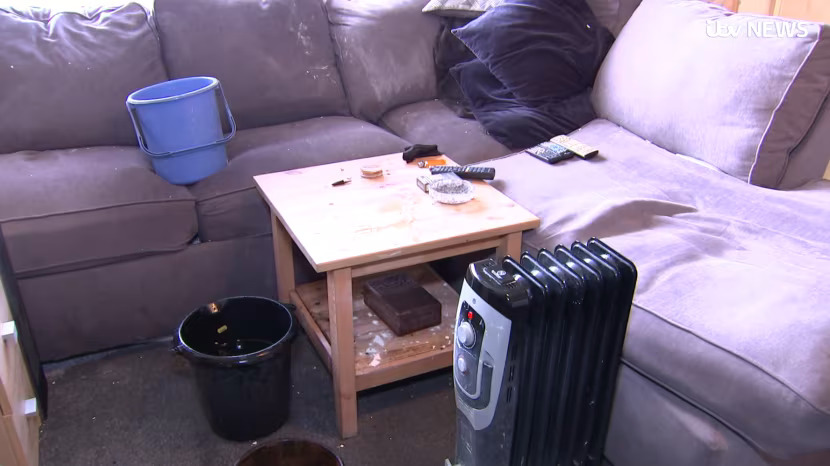
The leak is so bad, buckets that catch the water need to be empty every six hours.
Credit: ITV News
Of those, 200,000, had a category one hazard such as damp, poor electrics, or fire hazards.
Shelter’s Chief Executive Polly Neate told ITV News: “Can you even imagine having to live like that in lockdown, I mean not in lockdown there’s absolutely no excuse for it at all, but at the times we are living through as well.
“I can’t imagine the stress, and people’s housing situation, when it’s insecure or unsafe for any reason, you can’t overstate the level of stress and lack of mental wellbeing it causes for parents and especially for children.”
Polly Neate, Shelter Chief Executive: “There isn’t really any possible way that those properties are fit for human habitation.”
She added: “This is really bad, I mean it’s probably the worst I personally have ever seen, I’m not sure if it’s the worst Shelter has ever seen, but it’s definitely the worst I have seen. Just in terms of the sheer unliveability of it, there isn’t really any possible way that those properties are fit for human habitation, so there’s absolutely no excuse for it at all.”
In response to our report, Housing secretary Robert Jenrick said he was “appalled” by the conditions.
“People living in social housing must be treated with dignity and respect. And their complaints handled effectively,” he tweeted.”That’s the heart of our recent Charter on Social Housing. I’m appalled by what has occurred in Croydon and will be seeking urgent answers from Croydon Council.”
Croydon Council denied our request for an interview.
In statement, a spokesperson said: “We were very concerned to learn of these issues at these properties, and the photographs we have seen show conditions that are clearly not acceptable.“We are sorry that these residents have not had the level of care for their homes that they rightly expect, and we will be looking into what has happened as a matter of urgency.” Croydon Council declared bankruptcy in November 2020. The council denied the continued disrepair at Regina Road was linked to their current financial situation.
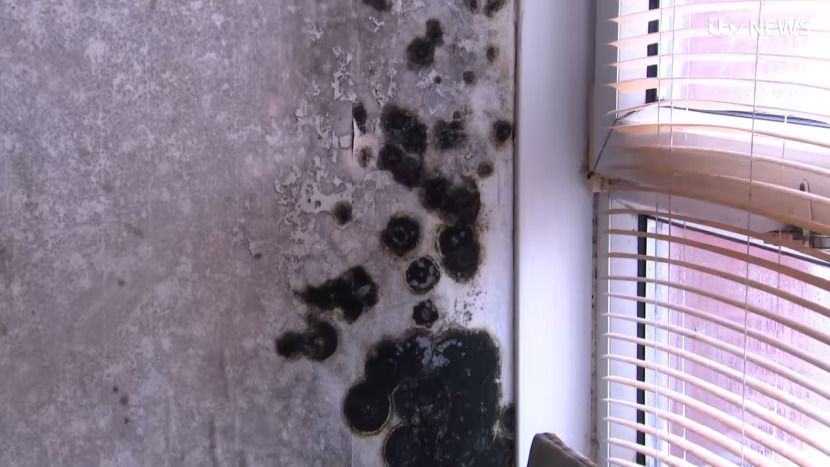
Mould can cause respiratory problems. Credit: ITV News
When we emailed the council on Thursday 18 March with what we found, they told us someone would be visiting the flats on Friday 19 March “to ensure first and foremost that our tenants are safe, and as a matter of urgency we will be fixing both the issues at their properties and the underlying leak at a flat above.”
Leroy and Fransoy have spent over four months calling to ask for repairs to be made. It took less than 24 hours for someone to be sent to look at their flats after ITV News contacted Croydon Council.
On the allegation of racism in the handling of Leroy’s complaint, Croydon Council did not provide a response.

